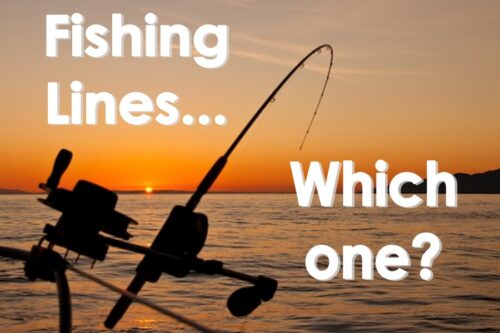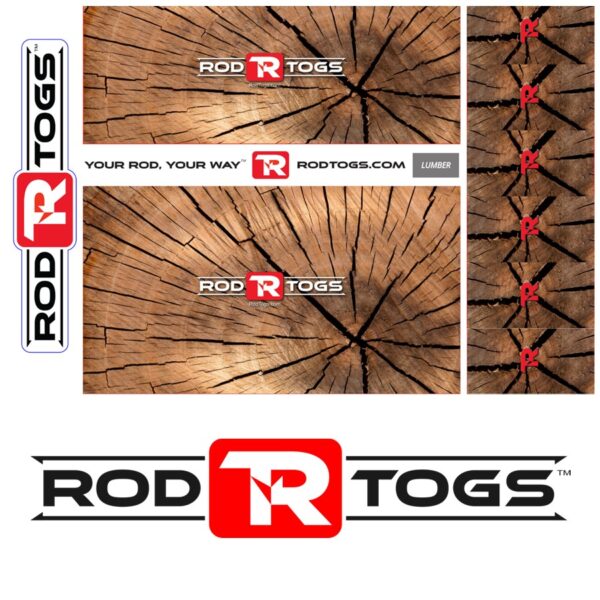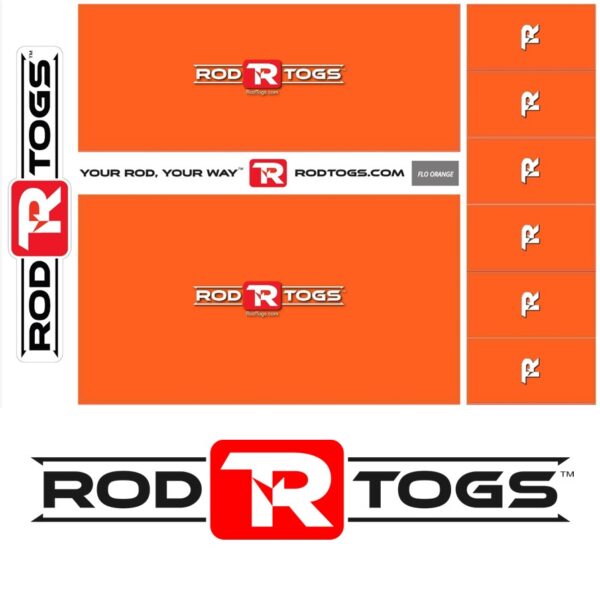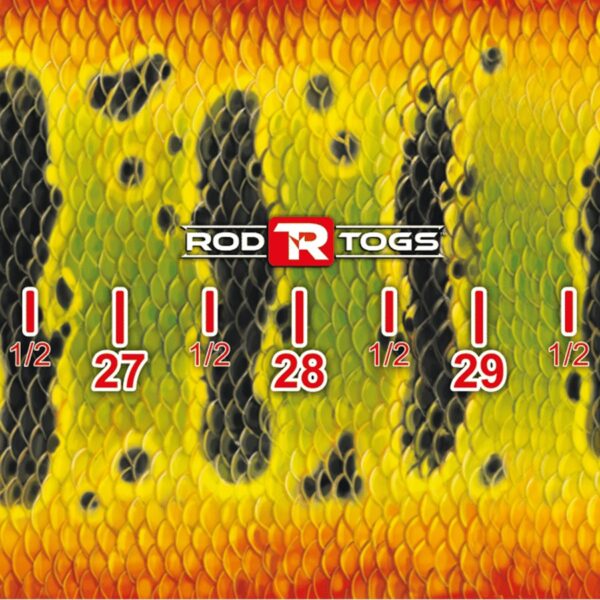The fish took it “hook, line and sinker” as the saying goes.
But, what kind of line was it?
There are several fishing lines on the market today made from a wide array of materials, and each fishing line type has advantages and disadvantages.
Let’s take a look at the common types of fishing lines on the market today and what fishing lines are best suited to specific fishing situations.
Fishing Line Type #1: Monofilament
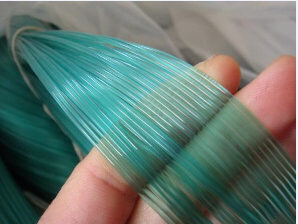
Monofilament is what the name would suggest; a single (“mono”) strand of line. The line diameter is often relevant to the line strength. (photo credit: alibaba.com)
To start off, we will take a look at the most commonly used fishing line out there, the monofilament fishing line.
Monofilament is the line most fishermen know quite well, even those who only fish periodically.
A monofilament line is a single strand line and is not constructed of multiple filaments like braided line.
Monofilament, like fluorocarbon, is made by extrusion. First, batches of polymers are melted, thoroughly mixed, and then extruded by pressure through small holes, forming the fishing line, and then the fishing line cools.
Extruded monofilament line is then spun into spools of various diameters. The diameter of the extrusion holes keeps the monofilament diameter consistent, and the diameter directly correlates to the line test or strength.
-
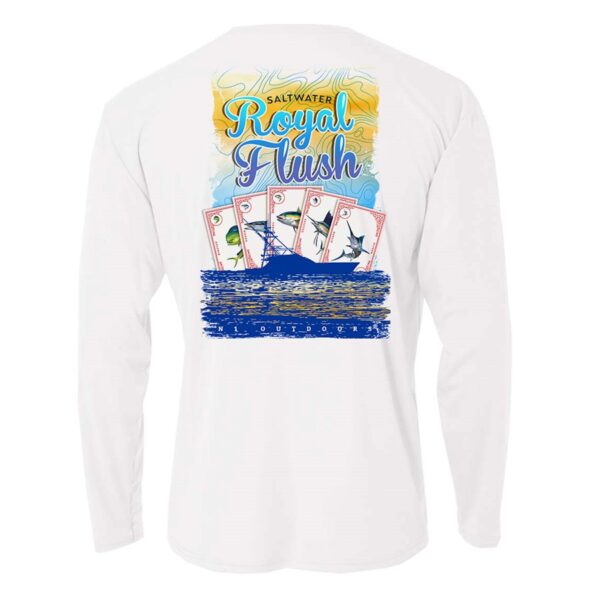
N1 Outdoors® Royal Flush™ UPF 45+ Performance Fishing Shirt
$39.99 – $44.99 Select options This product has multiple variants. The options may be chosen on the product page -
Sale!
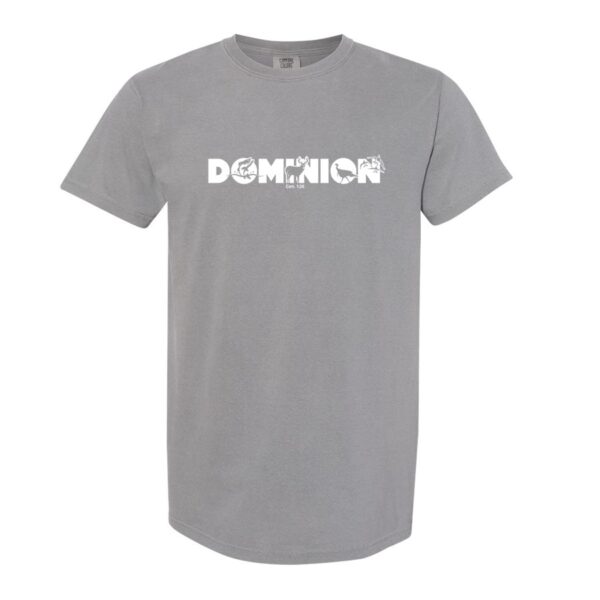
N1 Outdoors® Dominion™ Tee
$19.99 Select options This product has multiple variants. The options may be chosen on the product page -
Sale!
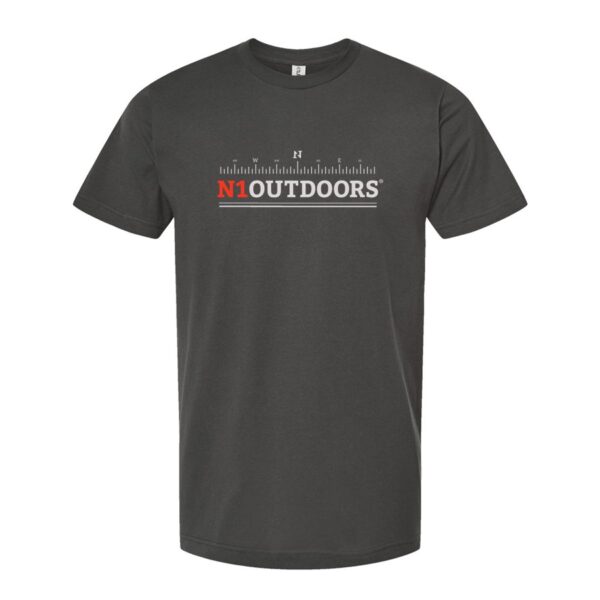
N1 Outdoors® Compass Tee
$9.00 Select options This product has multiple variants. The options may be chosen on the product page
Monofilament Advantages
Monofilament is easy to handle and work with and is much more flexible than other lines like fluorocarbon. Monofilament is an excellent all-around line that can work in most fishing situations.
Another advantage of the monofilament line type is the cost.
Monofilament line is the cheapest type out there. An angler can spool up several fishing reels with monofilament for a low price.
This makes it very popular for anglers who run several rods while trolling, as braid would cost hundreds of dollars to spool several trolling reels.
Monofilament fishing line can stretch up to 25% by length. So, this makes it an excellent fishing line choice for situations where shock absorption is crucial, like when big game fishing for certain species like catfish, or when used in trolling applications.
Monofilament Disadvantages
The stretch of monofilament can also be a disadvantage in other fishing applications, and having knowledge of each type of fishing line is crucial for fishing success.
One other disadvantage of monofilament is the damage it can receive from UV light.
Now, this isn’t as big of a disadvantage as it may seem, as it takes a significant amount of time for it to occur, but leaving the fishing line in direct sunlight for long periods will damage the line on a molecular level. After a couple of seasons, the line will become brittle and need to be replaced.
Fishing Line Type #2: Fluorocarbon
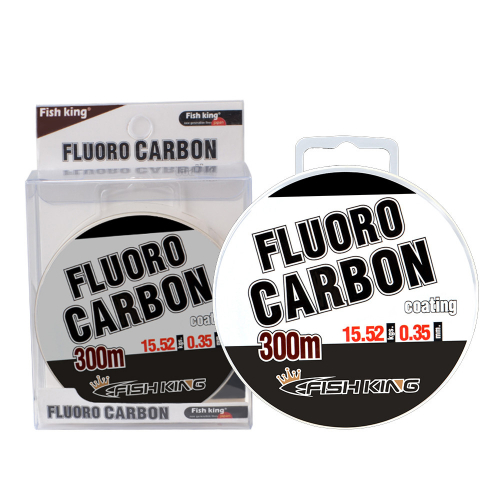
Flourocarbon fishing line is more dense than monofilament and stronger as well, without an increased diameter. (Photo credit: alibaba.com)
If the word fluorocarbon seems familiar to you, it’s because it’s used to make a wide variety of things like Teflon, Freon, and many other products and materials. Fluorocarbon also uses a wide range of compounds like carbon, fluorine, and chlorine.
Fluorocarbon is similar to monofilament in that it is extruded into a single strand.
Fluorocarbon Advantages
Unlike monofilament lines, the molecules of fluorocarbon lines are more densely packed. This makes the line much stronger than monofilament without an increase in diameter, and it also makes it heavier and stiffer compared to monofilament.
Fluorocarbon features an increased level of abrasion resistance compared to monofilament lines. Unlike monofilament lines, fluorocarbon line is not sensitive to UV light and will last longer before needing to be discarded.
One of the main advantages of the fluorocarbon line is its’ stealth factor. Fluorocarbon lines have nearly the exact same refractive index as water, which means that they becomes nearly invisible when the fluorocarbon line is submerged.
The stiffness of the fluorocarbon line gives the line increased sensitivity over monofilament with significantly less stretch, so an angler can feel even the lightest of strikes.
Fluorocarbon Disadvantages
The only real major downside of fluorocarbon is that it retains memory, and will coil after being spooled for long periods of time, but overall this disadvantage is minor.
Fluorocarbon fishing line is moderately expensive and is in the middle of the road in terms of price between monofilament and braided lines.
Fishing Line Type #3: Braided
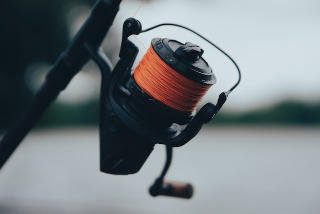
Braided line is thinner in diameter and has a much higher tensile strength that flurorocarbon or mono.
Braided fishing lines can be made from several different materials like Dacron, Dyneema, or spectra fibers.
The construction of braided fishing lines consists of using multiple strands of this material and interweaving and braiding them together to create a fishing line with extreme strength compared to the other two lines previously mentioned.
Braided Line Advantages
Braided lines have virtually no stretch, making them extremely sensitive to the lightest bite or when bumping your lures off cover or on the bottom, allowing anglers to “feel fish.”
Braided lines are much thinner than monofilament and fluorocarbon lines, meaning you can hold vastly more line on the same spool.
The thin diameter of braided line allows you to go much higher in tensile strength than is typically needed without having any adverse effects.
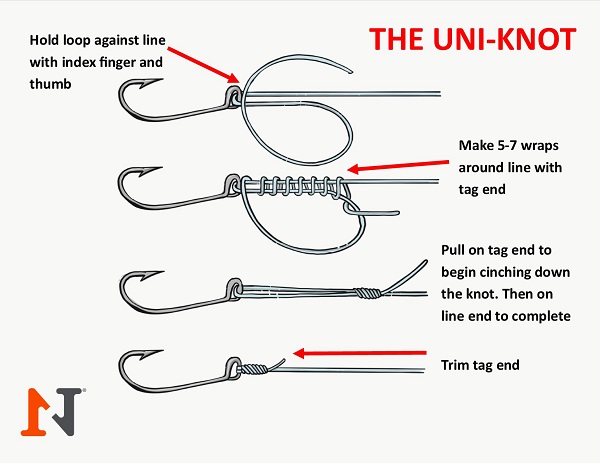
Braided Line Disadvantages
For some fishing applications, the lack of stretch can actually be detrimental, and one area where braided lines suffer greatly is in the stealth department.
Braided lines are highly visible in the water, which can be a serious disadvantage on bodies of water with high clarity and heavy fishing pressure.
While Braided lines have high tensile strength and general abrasion resistance, they are still susceptible to getting cut by predatory fish with sharp teeth like muskies, pike, and various saltwater species. This means you will want to run a leader when fishing for these species.
So, Which Fishing Line Type Should I Use?
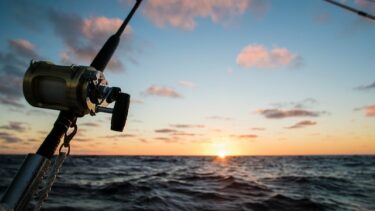
But, what type of fishing line should you use? Let’s weigh the features…
Let’s look at what type of line you should use for different fishing situations, as well as what species each line works well with.
Monofilament
- Fishing applications where shock absorption is beneficial
- Fishing situations where moderate stealth is needed
- General purpose fishing situations using standard lures and tactics.
- Commonly Used for panfish, trout, walleye, and various saltwater species.
Fluorocarbon
- Fishing situations where stealth is crucial
- When fishing in heavy cover due to good abrasion resistance
- When you need a high level of line sensitivity
- Commonly used for walleye, bass, and trout
Authors note on fluorocarbon: Most anglers have switched from monofilament to fluorocarbon lines entirely, as there is not much in terms of downsides in fluorocarbon over monofilament line, except for cost.
Braided Line
- When maximum strength is needed
- When stealth isn’t a concern
- Fishing applications around heavy cover
- Exclusively used by musky anglers, common in pike fishing, saltwater fishing, big-game fishing, and specific bass and catfish fishing situations.
-
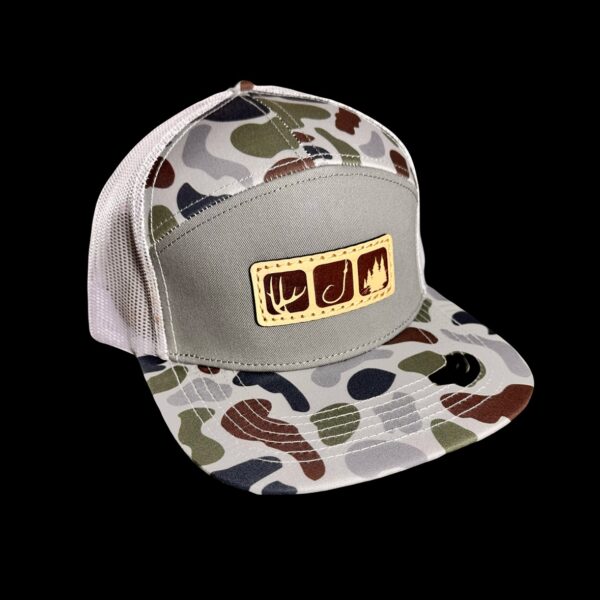
N1 Outdoors® Flagship TriBlock Brackish Camo Leather Patch 7-Panel Hat
$29.99 Select options This product has multiple variants. The options may be chosen on the product page -
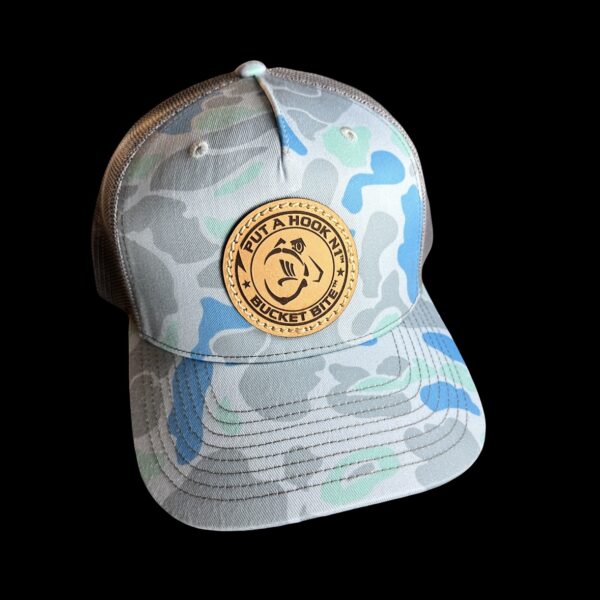
N1 Outdoors® Bucket Bite™ Leather Patch Hat
$29.99 Select options This product has multiple variants. The options may be chosen on the product page -
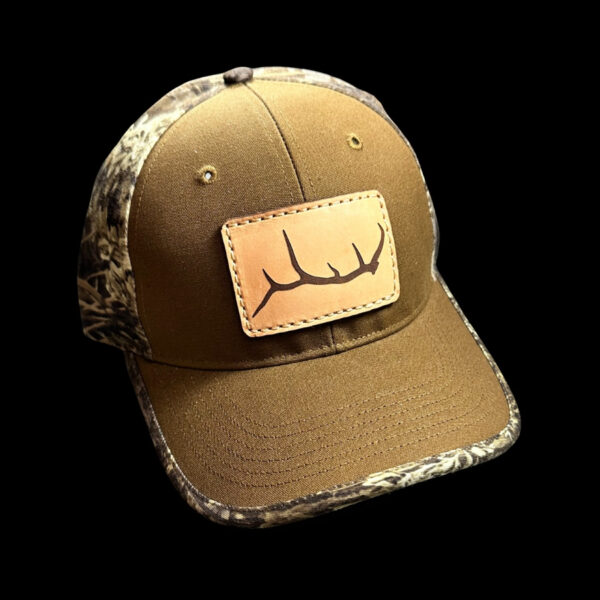
N1 Outdoors® Elk Antler Leather Patch Hat (Duck Cloth/Camo)
$32.99 Select options This product has multiple variants. The options may be chosen on the product page
Final Thoughts On Types Of Fishing Line
Not choosing the correct fishing line can cost you fish due to reasons such as lack of stealth, weakened line due to abrasion, or other factors.
Choosing the right fishing line is crucial, and we hope this article helped to inform you on which line to use. We hope you put a hook N1!

